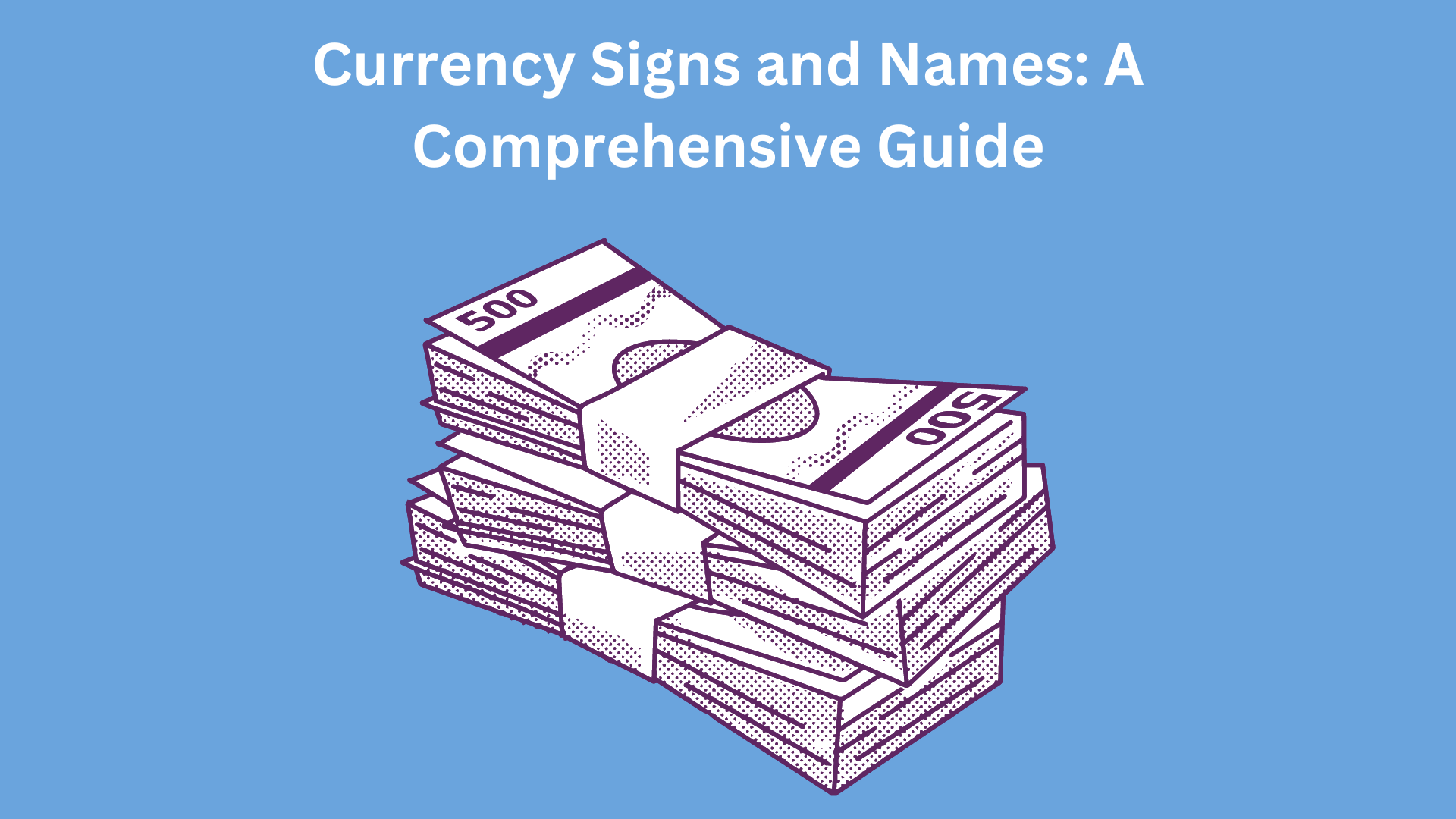Currency Signs and Names: A Comprehensive Guide
In today's interconnected world, understanding currency symbols and names is crucial for developers and businesses. Whether you're working on international transactions or building financial applications, knowing the currencies used around the globe is essential. In this guide, we'll explore the symbols and names of currencies worldwide, providing valuable insights for developers and businesses alike.

What Are Currency Signs and Names?
Currency signs are symbols used to represent various currencies in financial transactions and exchanges. These signs are typically used in conjunction with currency codes, which are standardized abbreviations for currencies. Currency names, on the other hand, are the full names of the currencies, often reflecting the country or region where they are used.
Importance of Currency Signs and Names
1. International Transactions: Currency signs and names are essential for conducting international transactions. They help ensure clarity and accuracy in financial communications.
2. Currency Exchange: Understanding currency signs and names is crucial for currency exchange businesses and platforms.
3. Financial Applications: Developers need to incorporate accurate currency signs and names in financial applications to provide users with correct information.
Common Currency Signs and Names
1. USD - United States Dollar: The symbol for the US Dollar is $. It is the most widely used currency in the world.
2. EUR - Euro: The symbol for the Euro is €. It is the official currency of the Eurozone.
3. GBP - British Pound Sterling: The symbol for the British Pound Sterling is £. It is the oldest currency still in use today.
4. JPY - Japanese Yen: The symbol for the Japanese Yen is ¥. It is the third most traded currency in the foreign exchange market.
Conclusion
Understanding currency signs and names is essential for developers and businesses operating in the global economy. By familiarizing themselves with the symbols and names of currencies worldwide, they can ensure smooth financial transactions and accurate financial reporting.

FAQs
Q: What is the currency sign for the Canadian Dollar?
A: The currency sign for the Canadian Dollar is $CAD.
Q: Are currency signs and currency codes the same?
A: No, currency signs are symbols used to represent currencies, while currency codes are standardized abbreviations for currencies.
Q: How often do currency signs and names change?
A: Currency signs and names can change due to economic, political, or social reasons. However, such changes are relatively rare.
Q: Do all countries have their own currency?
A: No, some countries use the currency of another country or a regional currency.